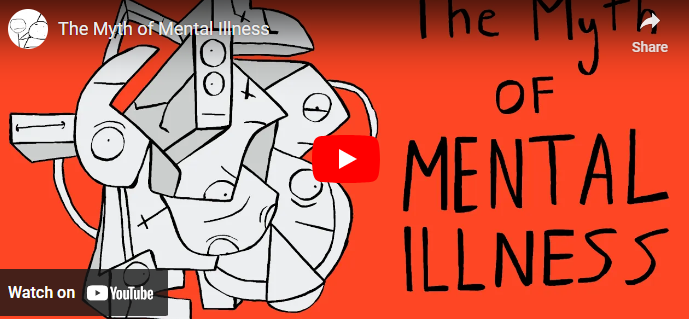
Contents
- 1 T1: The Therapeutic Benefits of Art Therapy on Mental Health
- 2 The Healing Power of Music Therapy in Mental Health Treatment
- 3 The Role of Dance and Movement Therapy in Promoting Mental Well-being
- 4 The Application of Drama Therapy in Supporting Emotional Expression and Communication
- 5 The Emerging Field of Animal-Assisted Therapy and its Impact on Mental Health
T1: The Therapeutic Benefits of Art Therapy on Mental Health
Art therapy is a form of creative therapy that utilizes various art modalities to improve mental health and well-being. This therapeutic approach has been proven to have numerous benefits for individuals struggling with mental health issues. Through engaging in artistic activities and expressing themselves visually, individuals can explore their emotions, develop self-awareness, and find a sense of empowerment and healing.
Art therapy provides a safe and non-judgmental environment for individuals to express themselves freely. By using art materials such as paint, clay, or collage, individuals are encouraged to create artwork that reflects their inner emotions and experiences. This process allows them to tap into their subconscious mind and access deeper feelings that may be difficult to express verbally. Through art, individuals can communicate and process their emotions in a symbolic and metaphorical way, which can be incredibly powerful and therapeutic.
One of the main benefits of art therapy is its ability to reduce stress and anxiety. Engaging in creative activities can help individuals focus their attention on the present moment, allowing them to temporarily escape from their worries and concerns. Art therapy also helps in regulating emotions and promoting relaxation, which can significantly reduce stress levels. Furthermore, the process of creating art helps in promoting mindfulness and self-reflection, enabling individuals to gain a deeper understanding of their emotions and develop coping strategies.
Art therapy can also be particularly beneficial for individuals with trauma-related disorders. Traumatic experiences can be difficult to process and verbalize, and art therapy provides an alternative and less threatening way to explore and express these experiences. Through the use of art materials, individuals can externalize their trauma, giving it a tangible form and creating some distance between themselves and the experience. This process can help individuals gain a sense of control and mastery over their trauma, leading to increased resilience and healing.
In addition to its emotional benefits, art therapy also enhances cognitive function and improves overall well-being. Creating art requires problem-solving skills, decision-making, and critical thinking, which can strengthen cognitive abilities. Engaging in art-making activities also improves self-esteem and self-confidence, as individuals discover their creative abilities and experience a sense of accomplishment through their artwork. This boost in self-esteem can have a positive ripple effect on other areas of life, contributing to improved mental health and overall well-being.
Art therapy is a powerful and effective therapeutic approach for individuals with mental health issues. Through the process of creating art and expressing themselves visually, individuals can experience a range of emotional, cognitive, and psychological benefits. Whether it is reducing stress and anxiety, processing trauma, or improving self-esteem, art therapy offers a unique and creative way to support mental health and promote healing.
The Healing Power of Music Therapy in Mental Health Treatment
Music has long been recognized as a powerful tool for self-expression and emotional release. It has the ability to evoke strong emotions, transport us to different times and places, and connect us to our inner selves. In recent years, the healing potential of music has been harnessed in the field of mental health through an innovative therapy known as music therapy.
Music therapy utilizes the unique qualities of music to promote emotional, cognitive, and social well-being. It involves the use of music, such as listening, singing, or playing instruments, to address the specific needs and goals of individuals with mental health concerns. This therapeutic approach can be tailored to suit a range of mental health conditions, including depression, anxiety, trauma, and schizophrenia.
One of the key benefits of music therapy is its ability to reduce stress and anxiety. Music has the power to calm the nervous system and promote relaxation. By listening to soothing melodies or engaging in musical activities, individuals can experience a sense of peace and tranquility. This can be particularly beneficial for those struggling with symptoms of anxiety disorders or high levels of stress.
Another significant advantage of music therapy is its impact on mood regulation. Music has the ability to uplift our spirits, evoke positive emotions, and create a sense of joy. Through music therapy, individuals can explore and express their emotions in a safe and non-verbal way. They can connect to the music on a deep level, allowing them to process and release pent-up emotions. This can be especially beneficial for individuals with mood disorders, such as depression or bipolar disorder.
In addition to emotional benefits, music therapy also enhances cognitive functioning. Engaging in musical activities can improve focus, concentration, and memory. Playing a musical instrument, for example, requires coordination, attention to detail, and the ability to follow instructions. These cognitive skills can then be transferred to other areas of life, helping individuals improve their overall cognitive abilities.
Furthermore, music therapy promotes social connection and communication. Group music therapy sessions provide individuals with an opportunity to interact with others in a creative and supportive environment. Through collaborative music-making, individuals can develop social skills, build relationships, and gain a sense of belonging. This can be particularly helpful for individuals with social anxiety or difficulties in forming interpersonal connections.
Music therapy offers a unique and effective approach to promoting mental health and well-being. By harnessing the healing power of music, individuals can find emotional release, improve mood regulation, enhance cognitive functioning, and foster social connection. Whether through listening, singing, or playing instruments, music therapy provides a safe and empowering space for individuals to explore and express themselves. If you or someone you know is struggling with mental health concerns, consider the transformative potential of music therapy as a complementary treatment option.
The Role of Dance and Movement Therapy in Promoting Mental Well-being
Dance and movement therapy is an innovative form of therapy that recognizes the important connection between the mind and body. It harnesses the power of movement to promote mental well-being and enhance overall physical and emotional health. This creative therapy offers numerous benefits for individuals struggling with mental health issues, offering an outlet for self-expression and a means of connecting with their emotions. Let’s explore how dance and movement therapy can play a vital role in promoting mental well-being.
One of the key benefits of dance and movement therapy is its ability to serve as a form of nonverbal communication. For individuals who find it difficult to express their emotions or who may struggle with verbal communication, dance therapy provides an alternative means of self-expression. Through movement, individuals can convey their thoughts, feelings, and experiences, helping them to process and release pent-up emotions. This can be particularly helpful for individuals with conditions such as anxiety, depression, or trauma-related disorders.
Moreover, dance and movement therapy can also help individuals reduce stress and anxiety. Engaging in physical activities releases endorphins, the body’s natural mood-boosting chemicals, which can alleviate symptoms of stress and anxiety. The rhythmic movements of dance can be particularly soothing, grounding individuals in the present moment and promoting a sense of calm and relaxation.
In addition to the emotional benefits, dance and movement therapy also offers physical benefits. Engaging in dance and movement can enhance physical coordination, flexibility, and strength. It can also improve body image and self-esteem, as individuals become more in tune with their bodies and learn to appreciate their unique abilities.
Furthermore, dance and movement therapy can foster social connection and a sense of community. Group dance therapy sessions provide a safe and supportive environment where individuals can connect with others who may be experiencing similar challenges. This sense of belonging and camaraderie can boost self-confidence, reduce feelings of isolation, and enhance overall well-being.
Dance and movement therapy is a versatile form of therapy that can be utilized across a range of populations and settings. It has been shown to be effective in treating various mental health conditions, including eating disorders, substance abuse, and post-traumatic stress disorder. Additionally, it can be integrated into other therapeutic approaches, such as cognitive-behavioral therapy or mindfulness-based practices, to enhance the overall efficacy of treatment.
Dance and movement therapy offers a unique and powerful approach to promoting mental well-being. Its combination of physical movement, emotional expression, and social engagement provides individuals with a holistic means of addressing their mental health concerns. By incorporating dance and movement therapy into treatment plans, mental health professionals can help individuals explore their emotions, reduce stress, enhance their physical well-being, and foster a sense of social connection.
The Application of Drama Therapy in Supporting Emotional Expression and Communication
Drama therapy is a unique form of creative therapy that utilizes the power of theater techniques and storytelling to support individuals in their emotional expression and communication. It is an effective approach that can be used to address various mental health concerns and promote overall well-being.
One of the key principles of drama therapy is the concept of "role theory." Through the use of role-playing, individuals are able to explore and understand different perspectives, allowing them to gain insights into their own emotions and experiences. By stepping into different roles, individuals can safely express and process difficult emotions, trauma, or conflicts in a supportive and non-judgmental environment.
In drama therapy, a trained therapist guides individuals through a range of activities such as improvisation, storytelling, and role-play. These activities offer a creative outlet for individuals to express their thoughts and feelings in a symbolic and metaphorical way. By engaging in these activities, individuals can gain a deeper understanding of themselves and their relationships, leading to personal growth and healing.
One of the primary benefits of drama therapy is its ability to increase emotional expression. Many individuals struggle with effectively communicating their emotions and may feel overwhelmed or unable to express themselves verbally. Through drama therapy techniques, individuals can explore and embody emotions, allowing them to better understand and express their feelings. This can lead to a greater sense of self-awareness and improved emotional regulation.
Furthermore, drama therapy can also enhance communication skills. By engaging in various theatrical exercises, individuals can improve their ability to listen, express themselves clearly, and effectively communicate with others. These newfound communication skills can be valuable in personal relationships, as well as in professional settings.
Drama therapy can be particularly beneficial for individuals with a history of trauma or those struggling with mental health issues such as anxiety, depression, or substance abuse. It offers a safe and supportive environment for individuals to process their experiences, gain new perspectives, and develop healthier coping mechanisms.
Drama therapy is a powerful form of creative therapy that can support emotional expression and communication. Through the use of theater techniques and storytelling, individuals are able to explore their emotions, gain insights into their experiences, and develop healthier ways of communicating. Whether used as a stand-alone therapy or in conjunction with other treatment modalities, drama therapy can be an effective tool in promoting mental well-being and supporting individuals on their journey to recovery.
The Emerging Field of Animal-Assisted Therapy and its Impact on Mental Health
Animal-assisted therapy is a growing field that has gained recognition for its positive impact on mental health. The use of animals in therapeutic settings has been shown to provide numerous benefits for individuals struggling with various mental health issues. This article explores the role of animal-assisted therapy and its potential applications in promoting mental well-being.
Animals have a unique ability to connect with humans on an emotional level. Their presence can help reduce feelings of loneliness and isolation, which are common symptoms of mental health conditions such as depression and anxiety. Interacting with animals can provide a sense of comfort and companionship, creating a safe space for individuals to express their emotions without judgment.
One of the key benefits of animal-assisted therapy is its ability to increase social interaction and improve communication skills. Animals, particularly dogs, can serve as a bridge between individuals, encouraging conversation and enhancing social connections. This is particularly helpful for those with social anxiety or difficulty in forming and maintaining relationships. The unconditional love and acceptance offered by animals can help individuals feel more open and secure in expressing themselves.
Animal-assisted therapy has also been found to reduce stress and anxiety. The presence of animals has a calming effect on the nervous system, leading to lower levels of cortisol, the stress hormone. This can help individuals feel more relaxed and at ease, reducing symptoms of anxiety and promoting a sense of well-being.
Additionally, animal-assisted therapy can be particularly beneficial for children with mental health challenges. The presence of animals can help children feel more at ease and engaged in therapy sessions, making it easier for them to express their thoughts and emotions. Animals can also serve as a source of motivation and reward, making therapy sessions more enjoyable and encouraging active participation.
It is important to note that animal-assisted therapy is not a substitute for traditional forms of therapy but rather a complementary approach. Therapists work collaboratively with trained animals and their handlers to create a therapeutic environment that promotes healing and growth. Animal-assisted therapy can be integrated into various settings, including hospitals, schools, and rehabilitation centers, to enhance the overall well-being of individuals.
Animal-assisted therapy is an emerging field that holds great promise in promoting mental well-being. The unique bond between animals and humans can create a safe and nurturing environment for individuals to express themselves and work towards recovery. By incorporating animals into therapy sessions, individuals can experience the therapeutic benefits of companionship, improved social interaction, stress reduction, and enhanced emotional expression. Animal-assisted therapy is a valuable addition to the range of creative therapies available for mental health treatment.
Conclusion
Creative therapies such as art, music, dance, drama, and animal-assisted therapy have all demonstrated their immense therapeutic benefits in supporting mental health. Art therapy provides individuals with a means of self-expression and exploration, allowing them to engage in a non-verbal form of communication that can be deeply healing. Creating art can help to reduce stress, enhance self-esteem, and promote self-awareness, making it a valuable tool in mental health treatment.
Music therapy harnesses the power of sound and rhythm to evoke emotional responses and promote relaxation and self-reflection. It has been shown to be effective in reducing anxiety, depression, and pain, while also enhancing cognitive abilities and social interactions. By integrating music into mental health treatment, individuals can experience profound healing and personal growth.
Dance and movement therapy recognizes the mind-body connection and utilizes the power of movement to support emotional well-being. Through dance and movement, individuals can release pent-up emotions, enhance self-expression, and improve body awareness. This form of therapy encourages individuals to explore their feelings and experiences through their physicality, fostering a deeper understanding and acceptance of themselves.
Drama therapy taps into the therapeutic potential of storytelling and role-playing. By engaging in dramatic activities, individuals can navigate their emotions, confront personal challenges, and develop problem-solving skills. Drama therapy promotes emotional expression, communication, and empathy, enabling individuals to gain confidence, build social skills, and cultivate resilience.
The emerging field of animal-assisted therapy has also shown promise in promoting mental health. Interactions with animals, such as therapy dogs or horses, can foster a sense of comfort, trust, and companionship. Animal-assisted therapy has been shown to reduce anxiety, improve mood, and enhance socialization skills. The presence of animals can create a safe and non-judgmental environment, allowing individuals to explore and process their emotions with support and compassion.
These creative therapies into mental health treatment can greatly enhance the overall well-being of individuals. These therapies provide unique and alternative ways of promoting emotional healing, self-discovery, and personal growth. By engaging in art, music, dance, drama, or animal-assisted therapy, individuals can embark on a transformative journey that allows them to connect with their inner selves, express their emotions, and find solace and inspiration in the creative process. This holistic approach to mental health treatment recognizes and embraces the inherent therapeutic power of creativity, offering hope, healing, and a renewed sense of purpose to those in need.



